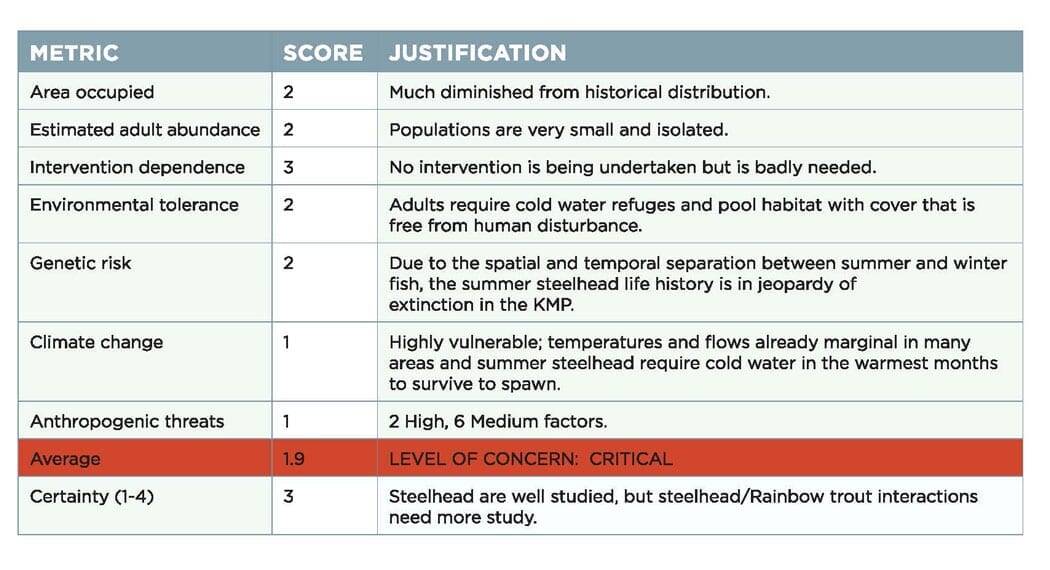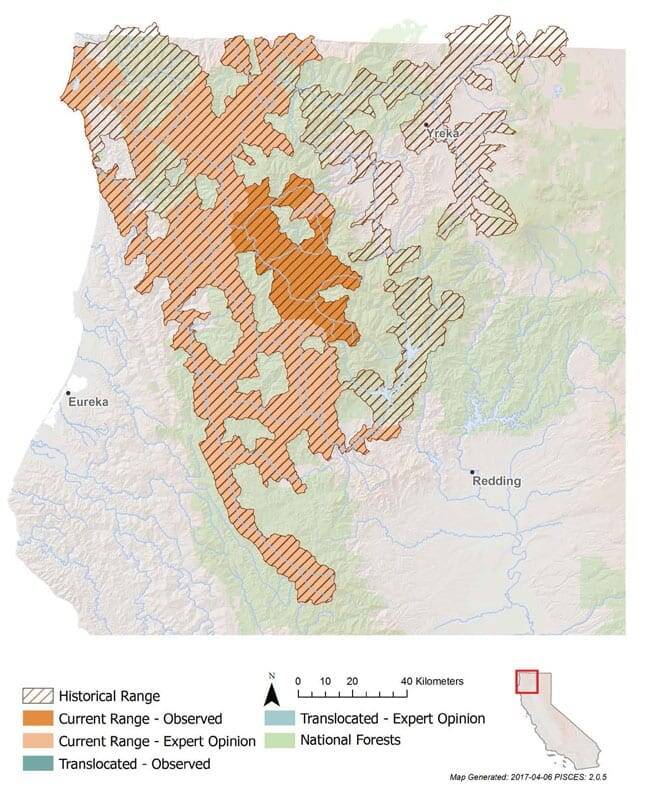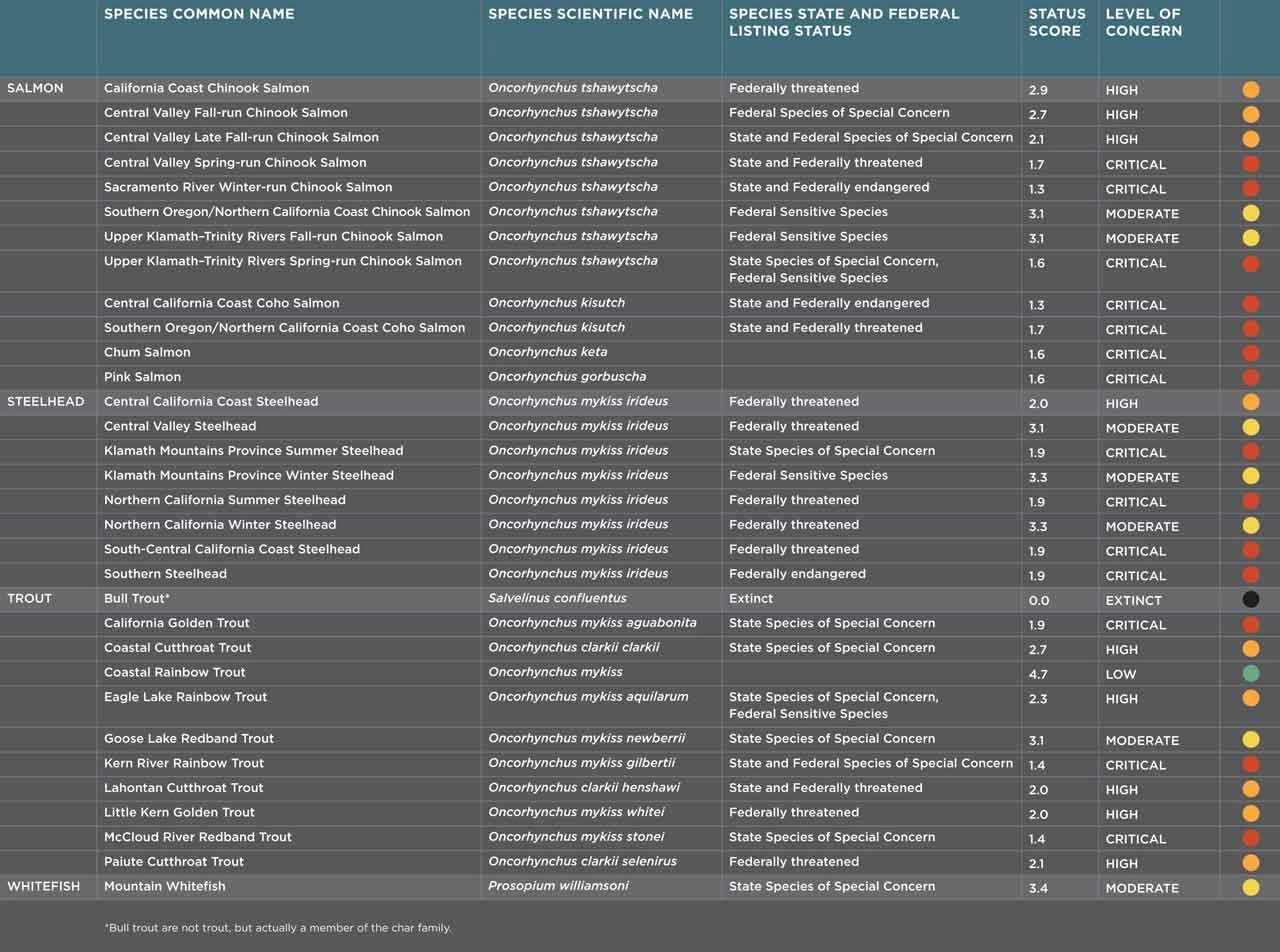How we're working to save them:
- Recognize KMP summer steelhead as a DPS and manage them separately from winter steelhead based on different conservation needs.
- Draft and implement a summer steelhead management plan to manage land use activities and improve habitat.
- Initiate a monitoring program to determine abundance and life history information and document habitat usage.
- Amend fishing regulations to protect vulnerable spring-run Chinook salmon and summer steelhead while in fresh water.
- Remove the four lowermost Klamath dams to restore access to historical habitat and prioritize habitat restoration to support re-colonization by wild steelhead.
Where to find Klamath Mountains Province Summer Steelhead:
Klamath Mountains Province Summer Steelhead Distribution
The KMP summer steelhead range historically included all coastal streams and their tributaries from the Klamath River, including Upper Klamath Lake, to the Elk River in southern Oregon. Their current distribution has been significantly reduced by dam construction, and now includes merely the Klamath River and its main tributaries, the Trinity, Salmon, Scott, and Shasta rivers, and other streams north to the Oregon border. It is likely that summer steelhead once migrated far upstream of the present site of Copco Dam on the Klamath River.
How they Klamath Mountains Province Summer Steelhead Scored:


Characteristics
KMP summer steelhead are nearly identical to the more common KMP winter steelhead in their appearance. They can be differentiated by their timing of freshwater migration from April through June, timing of sexual maturation in freshwater, location of spawning in higher- gradient habitats than other steelhead, and genetic variation. KMP summer steelhead may live up to seven years, and may return to spawn to their natal streams several times throughout their lives, especially in the Scott River.
Abundance
Little is known about the historical abundance of summer steelhead in the KMP. in recent decades, estimates of returning adults annually ranged from 1,400 to 4,000 fish. They have since dwindled to less than approximately 2,000 adults for the past decade. However, increases have been documented in some tributaries, such as the South Fork Trinity River, in recent years.
Habitat & Behavior
The open Klamath Estuary provides steelhead access to diverse habitats — from spring-fed systems such as the Shasta River, to snowmelt- driven Trinity River tributaries — at different times of year. Summer steelhead enter Klamath and Trinity river tributaries by June and ascend into summer holding areas with deep, bedrock pools with some overhead cover and cool seeps, often sharing these pools during the summer with spring-run Chinook salmon. They spawn from January to March, about a month earlier than winter steelhead. Generally, summer steelhead spawn in small or intermittent headwater tributaries, and juveniles migrate into perennial streams soon after hatching. Juvenile summer steelhead typically spend two years in fresh water before migrating to the ocean, and returning to spawn at three or four years of age.
Genetics
Klamath Mountains Province summer and winter steelhead are distinct from one another in their life histories, behaviors, and genetics, but are currently lumped together for management. The cues for early migration in summer steelhead has a genetic basis that can be passed on to offspring. More genetic research is needed on the existence of a possible fall-run steelhead in the Klamath and Trinity rivers, which enter fresh water a month earlier than winter steelhead and appear to have an intermediate life history between summer and winter fish.






















 Dams block access to historical spawning and rearing habitats. Downstream, dams alter the timing, frequency, duration, magnitude, and rate of change of flows decreasing habitat quality and survival.
Dams block access to historical spawning and rearing habitats. Downstream, dams alter the timing, frequency, duration, magnitude, and rate of change of flows decreasing habitat quality and survival.